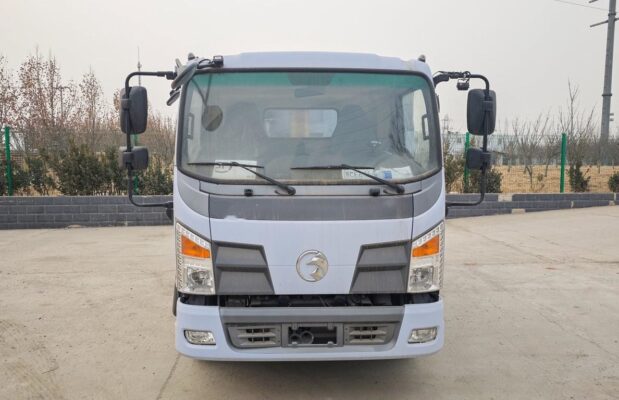Ujuzi wa Lori la Umeme
Why Electric Cars Are Moving Away from Physical Buttons
Electric cars are rapidly transforming the way we think about vehicle design and functionality, and one of the most noticeable changes is the move away from traditional physical buttons. Instead, these vehicles increasingly rely on advanced technologies such as touchscreens, voice recognition, and gesture controls to manage functions and enhance the driving experience. This evolution reflects a blend of practicality, aesthetics, and the pursuit of a more futuristic driving experience. Below, we explore in detail why electric cars are adopting button-free designs, diving into the implications for user experience, interior design, cost, and the overall vision for the future of transportation.
1. Enhanced User Experience with Advanced Technology
The shift from physical buttons to digital controls represents a leap forward in how drivers interact with their vehicles. Touchscreens offer a centralized interface where multiple functions, from navigation to climate control, can be accessed in one place. Voice recognition and AI-driven assistants further simplify interactions, allowing drivers to issue commands without taking their hands off the wheel or eyes off the road. Gesture controls, though still emerging, are another promising technology that enables users to perform actions with simple hand movements.
These technologies are designed to make the driving experience more intuitive, seamless, and enjoyable. Instead of fumbling with numerous buttons, drivers can rely on natural, easy-to-use interfaces that streamline control and minimize distractions.
2. Minimalistic Aesthetics and a Modern Appeal
One of the most striking benefits of reducing physical buttons is the sleek, minimalist look it provides to the car’s interior. By removing clusters of buttons, electric vehicles achieve a clean and uncluttered cabin design that exudes modernity and sophistication. This approach aligns with the expectations of contemporary consumers, who value not just functionality but also the aesthetics of their vehicles.
The lack of buttons enhances the feeling of spaciousness in the car, creating an open and airy atmosphere. Paired with ambient lighting and high-quality materials, the streamlined design fosters a sense of luxury and calm, making the driving experience more pleasant and relaxing.
3. Space Optimization in the Vehicle Interior
Eliminating physical buttons frees up valuable space within the cabin, which can be reallocated for other purposes. For instance, automakers can use this extra space to include larger touchscreens, more storage compartments, or additional comfort features. In electric cars, where efficient use of space is critical due to battery placement and other unique design considerations, this flexibility is particularly valuable.
The simplified layout also allows manufacturers to reimagine the overall ergonomics of the interior, ensuring that controls are within easy reach and that passengers have more room to relax. For cars designed with autonomous driving in mind, this space optimization becomes even more significant, as interiors may need to accommodate new seating configurations or entertainment systems.
4. Alignment with Futuristic Vision
Electric vehicles represent the cutting edge of automotive innovation, and their design choices often reflect this forward-thinking ethos. By eliminating traditional buttons, automakers signal a departure from the conventional and embrace a vision of the future that emphasizes technology and efficiency. This design philosophy appeals to consumers who are drawn to the idea of driving a car that feels advanced and innovative.
Furthermore, this futuristic approach helps establish electric cars as a distinct category within the automotive market. By setting themselves apart from traditional internal combustion engine vehicles in both form and function, electric cars strengthen their identity and appeal.
5. Cost Efficiency and Simplified Manufacturing
Reducing the number of physical buttons can also bring down manufacturing costs. Each button requires materials, wiring, and assembly, all of which add complexity and expense to the production process. By replacing these components with software-based controls, automakers can streamline manufacturing, reduce labor costs, and simplify quality control.
This cost efficiency can be passed on to consumers in the form of lower prices or reinvested in developing other features that enhance the vehicle’s overall value. For instance, savings from button reduction could be used to improve battery performance, add safety features, or enhance connectivity options.
6. Improved Maintenance and Upgradability
Button-free designs also contribute to easier maintenance and greater flexibility for updates. Physical buttons are subject to wear and tear over time, which can lead to malfunctions or the need for replacement. Digital interfaces, on the other hand, are less prone to physical damage and can be updated remotely via software upgrades.
This capability allows manufacturers to continually improve the user experience even after the car is sold. For example, new functionalities or interface improvements can be added through over-the-air updates, ensuring that the vehicle remains state-of-the-art throughout its lifecycle.
7. Challenges and Considerations
Despite these advantages, the shift away from physical buttons is not without its challenges. Critics argue that touchscreens and digital controls can sometimes be less intuitive or harder to use while driving. Unlike buttons, which can often be operated by touch alone, touchscreens typically require drivers to look away from the road to find the right control. To address this, automakers are investing heavily in refining user interfaces to make them as intuitive and safe as possible.
Zaidi ya hayo, there is a segment of drivers who prefer the tactile feedback of traditional buttons. For these users, the absence of physical controls may feel like a downgrade rather than an improvement. As such, some manufacturers are exploring hybrid solutions that combine digital interfaces with a small number of essential physical buttons.
8. The Broader Impact on Automotive Design
The transition to button-free designs is just one example of how electric vehicles are reshaping automotive design. By leveraging digital technology, electric cars are setting new standards for what vehicles can be. This transformation goes beyond aesthetics, influencing how cars are used, experienced, and even perceived by society.
As autonomous driving technology becomes more prevalent, the role of the driver is likely to diminish, further reducing the need for traditional controls. In this context, the elimination of physical buttons is not just a design choice but a step toward reimagining the entire concept of mobility.
Hitimisho
The decision to eliminate physical buttons in electric cars is driven by a combination of technological advancements, design considerations, cost savings, and consumer preferences. By embracing touchscreens, voice controls, and other digital solutions, electric vehicles are redefining what it means to drive a car in the 21st century. This shift reflects a broader vision of transportation that prioritizes innovation, ufanisi, and user experience.
While there are still challenges to overcome, the move toward button-free designs is a clear indication of the automotive industry’s commitment to shaping a smarter, sleeker, and more sustainable future. Electric cars are not just vehicles—they are symbols of progress, and their interiors are a testament to the limitless possibilities of modern design and technology.




